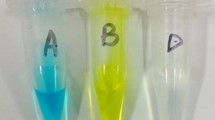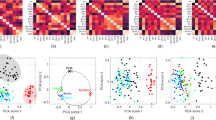Abstract
This paper investigates automatic detection of disease from the pattern of dried micro-drop blood stains from a patient’s blood sample. This method has the advantage of being substantially cost-effective, painless and less-invasive, quite effective for disease detection in newborns and the aged. Disease has an effect on the physical properties of blood, which in turn affect the deposition patterns of dried blood micro-droplets. For example, low platelet count will result in thinning of blood, i.e. a change in viscosity, one of the physical properties of blood. Hence, the blood micro-drop stain patterns can be used for diagnosing diseases. This paper presents automatic analysis of the dried micro-drop blood stain patterns using computer vision and pattern recognition algorithms. The patterns of micro-drop blood stains of normal non-diseased individuals are clearly distinguishable from the patterns of micro-drop blood stains of diseased individuals. As a case study, the micro-drop blood stains of patients infected with tuberculosis have been compared to the micro-drop blood stains of normal non-diseased individuals. The paper delves into the underlying physics behind how the deposition pattern of the dried micro-drop blood stain is formed. What has been observed is a thick ring like pattern in the dried micro-drop blood stains of non-diseased individuals and thin contour like lines in the dried micro-drop blood stains of patients with tuberculosis infection. The ring like pattern is due to capillary flow, an outward flow carrying suspended particles to the edge. Concentric rings (caused by inward Marangoni flow) and central deposits are some of the other patterns that were observed in the dried micro-drop blood stain patterns of normal non-diseased individuals.
Access this chapter
Tax calculation will be finalised at checkout
Purchases are for personal use only
Preview
Unable to display preview. Download preview PDF.
Similar content being viewed by others
References
Guthrie, R., Susi, A.: A simple phenylalanine method for detecting phenylketonuria in large populations of newborn infants. Pediatrics 32(3), 338–343 (1963)
Lakshmy, R.: Analysis of the use of dried blood spot measurements in disease screening. Journal of Diabetes Science and Technology 2(2), 242–243 (2008)
Mei, J.V., Alexander, J.R., Adam, B.W., Hannon, W.H.: Use of filter paper for the collection and analysis of human whole blood specimens. The Journal of Nutrition 131(5), 1631S–1636S (2001)
Kapur, S., Kapur, S., Zava, D.: Cardiometabolic risk factors assessed by a finger stick dried blood spot method. Journal of Diabetes Science and Technology 2(2), 236–241 (2008)
Jinks, D.C., Minter, M., Tarver, D.A., Vanderford, M., Hejtmancik, J.F., McCabe, E.R.: Molecular genetic diagnosis of sickle cell disease using dried blood specimens on blotters used for newborn screening. Human Genetics 81(4), 363–366 (1989)
Chamoles, N.A., Niizawa, G., Blanco, M., Gaggioli, D., Casentini, C.: Glycogen storage disease type II: enzymatic screening in dried blood spots on filter paper. Clinica Chimica Acta 347(1), 97–102 (2004)
Zytkovicz, T.H., Fitzgerald, E.F., Marsden, D., Larson, C.A., Shih, V.E., Johnson, D.M., Strauss, A.W., Comeau, A.M., Eaton, R.B., Grady, G.F.: Tandem mass spectrometric analysis for amino, organic, and fatty acid disorders in newborn dried blood spots a two-year summary from the new england newborn screening program. Clinical Chemistry 47(11), 1945–1955 (2001)
Crossle, J., Elliot, R.B., Smith, P.: Dried-blood spot screening for cystic fibrosis in the newborn. The Lancet 313(8114), 472–474 (1979)
Chace, D.H., Kalas, T.A., Naylor, E.W.: Use of tandem mass spectrometry for multianalyte screening of dried blood specimens from newborns. Clinical Chemistry 49(11), 1797–1817 (2003)
Alvarez-Muñoz, M.T., Zaragoza-Rodríguez, S., Rojas-Montes, O., Palacios-Saucedo, G., Vázquez-Rosales, G., Gómez-Delgado, A., Torres, J., Muñoz, O.: High correlation of human immunodeficiency virus type-1 viral load measured in dried-blood spot samples and in plasma under different storage conditions. Archives of Medical Research 36(4), 382–386 (2005)
Gelb, M.H., Turecek, F., Scott, C.R., Chamoles, N.A.: Direct multiplex assay of enzymes in dried blood spots by tandem mass spectrometry for the newborn screening of lysosomal storage disorders. Journal of Inherited Metabolic Disease 29(2–3), 397–404 (2006)
Li, Y., Scott, C.R., Chamoles, N.A., Ghavami, A., Pinto, B.M., Turecek, F., Gelb, M.H.: Direct multiplex assay of lysosomal enzymes in dried blood spots for newborn screening. Clinical Chemistry 50(10), 1785–1796 (2004)
Zhang, X.K., Elbin, C.S., Chuang, W.L., Cooper, S.K., Marashio, C.A., Beauregard, C., Keutzer, J.M.: Multiplex enzyme assay screening of dried blood spots for lysosomal storage disorders by using tandem mass spectrometry. Clinical Chemistry 54(10), 1725–1728 (2008)
Brutin, D., Sobac, B., Nicloux, C.: Influence of substrate nature on the evaporation of a sessile drop of blood. AME, Journal of Heat Transfer 134, 061101:1–061101:8 (2012)
MacDonell, H.L.: Bloodstain Patterns, 2nd edn. Laboratory of Forensic Sciences, Corning (2005)
Yakhno, T.A.: Drying drop technology as a possible tool for detection leukemia and tuberculosis in cattle. Journal Biomedical Science and Engineering 8, 1–23 (2015)
Deegan, R.D.: Pattern formation in drying drops. Physical Review E 61, 475–485 (2000)
Brutin, D., Sobac, B., Loquet, B., Sampol, J.: Pattern formation in drying drops of blood. Journal of Fluid Mechanics 667, 85–95 (2011)
Savina, L.: Crystalline Structures of Serum of Healthy and Ill Patients, p. 96. Krasnodar, Soviet Kuban (1999)
Shabalin, V.N., Shatokhina, S.N.: Morphology of Biological Fluids, p. 304. Khrisostom, Moscow (2001)
Rapis, E.: Changing the physical non equilibrium phase of complex plasma proteins film in patients with carcinoma. Technical Physics 47, 510–512 (2002)
Sikarwar, B.S., Shrama, S.K., Shukla, R.K., Ranjan, P.: Parametric study of sessile drop evaporation at atmospheric condition. In: Accepted in Proceedings of the 17th ISME Conference, ISME-17, IIT Delhi, India, October 3–4, 2015
Ghosh, A., Sikarwar, B.S., Attinger, D.: Microfluidic measurements of physical properties of blood for forensic studies. In: ASME 12th International Conference on Nanochannels, Microchannels, and Minichannels, Chicago, Illinois, USA, August 3–7, 2014. Paper number: FEDSM2014-22181
Sikarwar, B.S., Ghosh, A., Attinger, D.: Simple, low cost microfluidic measurements of physical properties of blood for forensic studies. In: ASME 12th International Conference on Nanochannels, Microchannels, and Minichannels, Chicago, Illinois, USA, August 3–7, 2014. paper number: FEDSM2014-22182
Attinger, D., Sikarwar, B.S., Chirstophe, F.: On the importance of drop impact studies in forensic applications. In: ASME 2014, 4th Joint US-European Fluids Engineering Division Summer Meeting, Chicago, Illinois, USA (August 3–7, 2014) paper number: FEDSM2014-22097
Goyal, A., Roy, M., Gupta, P., Dutta, M.K., Singh, S., Garg, V.: Automatic detection of mycobacterium tuberculosis in stained sputum and urine smear images. Archives of Clinical Microbiology (in press, 2015)
Author information
Authors and Affiliations
Corresponding author
Editor information
Editors and Affiliations
Rights and permissions
Copyright information
© 2016 Springer International Publishing Switzerland
About this paper
Cite this paper
Sikarwar, B.S., Roy, M., Ranjan, P., Goyal, A. (2016). Automatic Pattern Recognition for Detection of Disease from Blood Drop Stain Obtained with Microfluidic Device. In: Thampi, S., Bandyopadhyay, S., Krishnan, S., Li, KC., Mosin, S., Ma, M. (eds) Advances in Signal Processing and Intelligent Recognition Systems. Advances in Intelligent Systems and Computing, vol 425. Springer, Cham. https://doi.org/10.1007/978-3-319-28658-7_56
Download citation
DOI: https://doi.org/10.1007/978-3-319-28658-7_56
Published:
Publisher Name: Springer, Cham
Print ISBN: 978-3-319-28656-3
Online ISBN: 978-3-319-28658-7
eBook Packages: EngineeringEngineering (R0)




